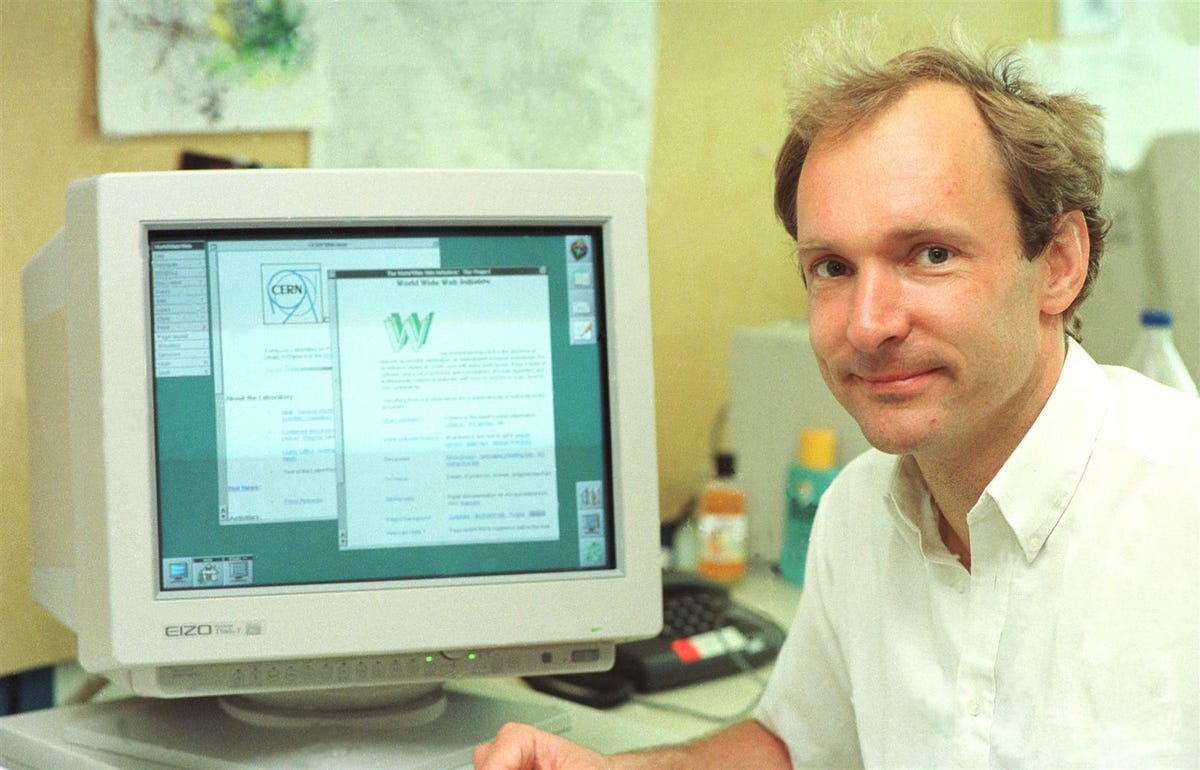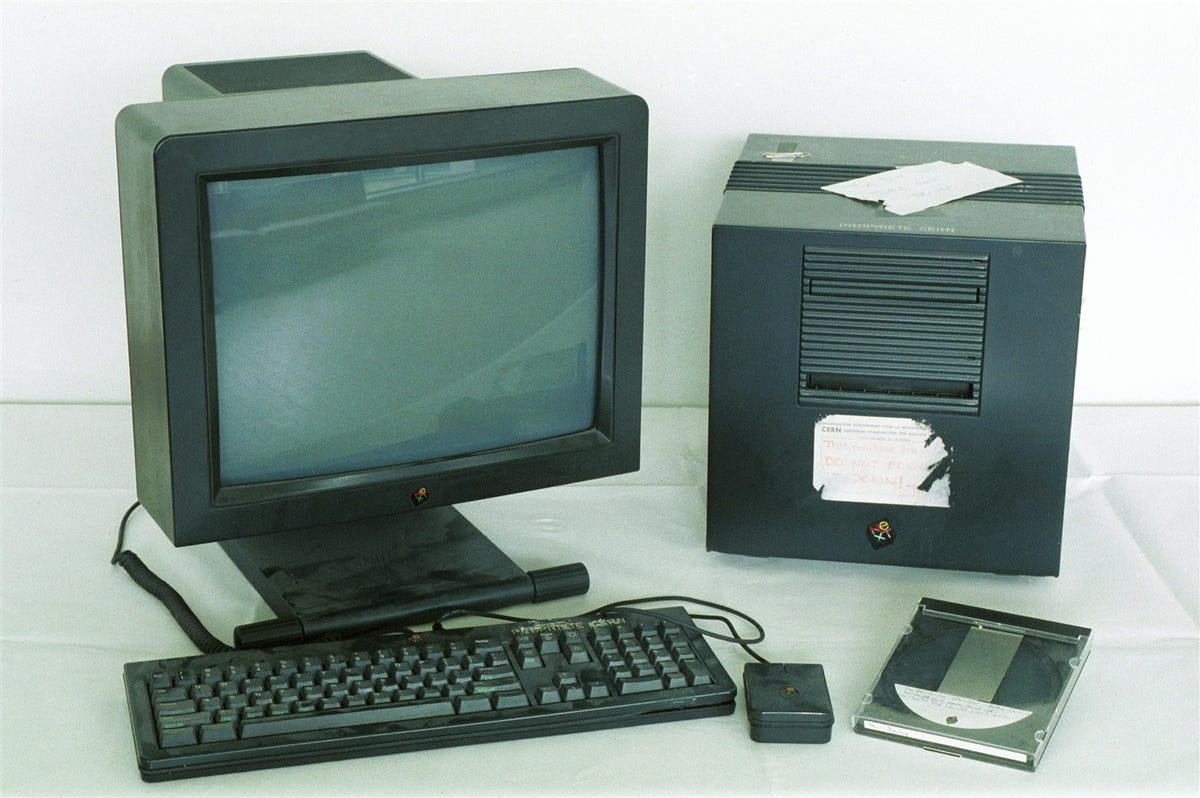Images: Berners-Lee and the dawn of the Web
The World Wide Web was born in a modest (paper) document dated March 13, 1989, by Tim Berners-Lee. His boss found it "vague, but exciting."

Tim Berners-Lee in 1994
In 1989, PCs were still a novelty for many folks, and at that point, how many people outside of scientific circles had every heard of something called the Internet? Things were about to start changing, though.
On March 13 of that year, a fellow named Tim Berners-Lee (seen here in 1994) working at CERN, the European Organization for Nuclear Research, made a proposal that rather drily addressed "the problems of loss of information about complex evolving systems" and proposed "a solution based on a distributed hypertext system."
What it gave birth to was the World Wide Web, and thus, eventually, Facebook, eBay, Google, iTunes, YouTube, Pets.com, blogs....
Berners-Lee's proposal

First Web server
Correction: This caption originally misstated the year Berners-Lee got the Next Cube that became the first Web server. It was September 1990.
Hypertext application on Next computer
The world's first-ever Web site? Info.cern.ch
Robert Cailliau in 1995
Berners-Lee and Nicola Pellow
Web demo at Hypertext 1991
WWW public domain document, page 1
WWW public domain document, page 2
Berners-Lee and Cailliau
Speaking with ZDNet UK earlier this week, at a House of Lords event focused on the Internet and privacy, Berners-Lee offered this historical reflection: "When people built the Internet, it was designed to be a cloud," he said. "When routing packets, the system only looks at the envelope--it's an important design principle. Now people find out what you write in your letters."

